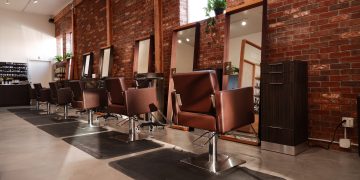
By Cynthia Robertson
Couple share how to safely view and photograph this summer’s solar eclipse
When photographers Les and Mary Anderson watched their first solar eclipse together, it was a life-changing event for them. Their goal is to help people to have a memorable, safe experience when watching and photographing an eclipse.
The Andersons recently gave a presentation at the Photographic Arts Building in Balboa Park to members of the Meetup group, “Best Places to Photograph in San Diego,” on how to view and photograph the eclipse occurring on Aug. 21.
“We want you to enjoy the eclipse, and to do it safely,” Les said.
The August solar eclipse will start at 9:07 a.m. and end at 11:46 a.m. The total eclipse will be the first one that can be seen from the continental U.S. since 1979.
“Back then, it was only the upper west corner. This time it cuts completely across the U.S. and everybody will see at least a partial eclipse, as here in San Diego,” Mary said.
The best place in San Diego to watch and photograph the eclipse — which will only be a partial one locally — is anywhere with a clear sky.
“However, it’s more fun to watch with a group. I’m guessing there will be a few local and neighborhood events throughout the county. I know the Fleet Science Center will be doing something,” Mary said.
Les agreed. “If there are coastal clouds, then head inland, but San Diego in August should be good from your own backyard.”
The Andersons stressed that the eclipse needs to be experienced first, with photography only second in importance.
“For those who stay in San Diego, you can photograph other people watching the eclipse and pinhole crescents through the trees,” Mary said, adding the necessity of watching the partial phases of the eclipse only through solar glasses.
Even an amateur photographer can shoot an eclipse successfully.
“Almost everybody has a camera with them at all times in their cell phone. Some great images can be taken with them. Digital point-and-shoot cameras will also work,” Mary said.
Their passion for all things astronomical began at an early age. Mary was in the third grade and her parents subscribed to the First Book of Astronomy. “I was hooked,” she said. “My parents then purchased me a small telescope. I still have pencil drawings from sunspots I sketched from looking through that telescope” she said.
As a youngster, Les was into all things nature, which led him straight into the sciences, including astronomy.
The Andersons met in May 1990 on a photo field trip to Yosemite sponsored by San Diego State University.
“Les sat next to me on the bus. We call it now our five-day, four-night first date,” Mary said.
Les remembers talking to Mary all about the animals, plants and geology of Yosemite until the sun went down. “Then up came the night and she told me about the sky,” he said.
They have been married for 25 years and travel the globe together to photograph everything under the sun.
Of all the photographic experiences they have both shared, Les considers the total solar eclipses to be the best.
“They have taken us to places we would have never gone, to see things we would have never seen, to experience anywhere from 32 seconds to five minutes-plus of totality. Basically, blinks of an eye in time we will remember the rest of our lives,” he said.
“Absolutely chasing the eclipses is my favorite, too,” Mary said. “It’s on our travel planner for as long as we are able.”
“But it wasn’t until I met Mary that it caught fire and with our first total solar eclipse together I was hooked, both ways,” Les said. “My first words after the eclipse were, ‘When and where is the next one of these?’’’
“I knew then he was a keeper,” Mary said, as everyone in the Meetup group laughed.

Photography became an interest to Mary shortly after she began to work at the then-new Reuben H. Fleet Space Theater in 1973. She was hired as an usher and then became a console operator of the planetarium shows.
“I helped produce the shows. Part of that was photography. Everything slide-based, including the old Kodalith Black and White for titles. That got me seriously interested in photography,” she said.
Les caught the photography bug while he was out on hunting adventures with his family in the mountains and deserts of Utah, where he grew up.
“To the dismay of my father, I found I much preferred photography. My first real adventures in photography started in the ‘70s,” he said.
The big jump in the Andersons’ photographic prowess came when they joined a camera club in the Photographic Arts Building in 2010.
Les is now president of the Southern California Association of Camera Clubs, which oversees the Photographic Arts Building in Balboa Park. Mary is the first vice president of programs. In the next few months, they plan to present their program on viewing and photographing the eclipse to more than 500 people.
“It is our big chance to share what we have learned so others can get the most of the experience,” Les said.
Meetup group member Joseph Podell raved about the Andersons’ presentation on March 9.
“It was an excellent seminar, very well presented and covering all the particulars for shooting the eclipse. Les and Mary are the Les Paul and Mary Ford of photographing celestial events,” he said.
Charles de Leon agreed. “Very informative.”
— Cynthia Robertson is a local freelance writer.












Discussion about this post